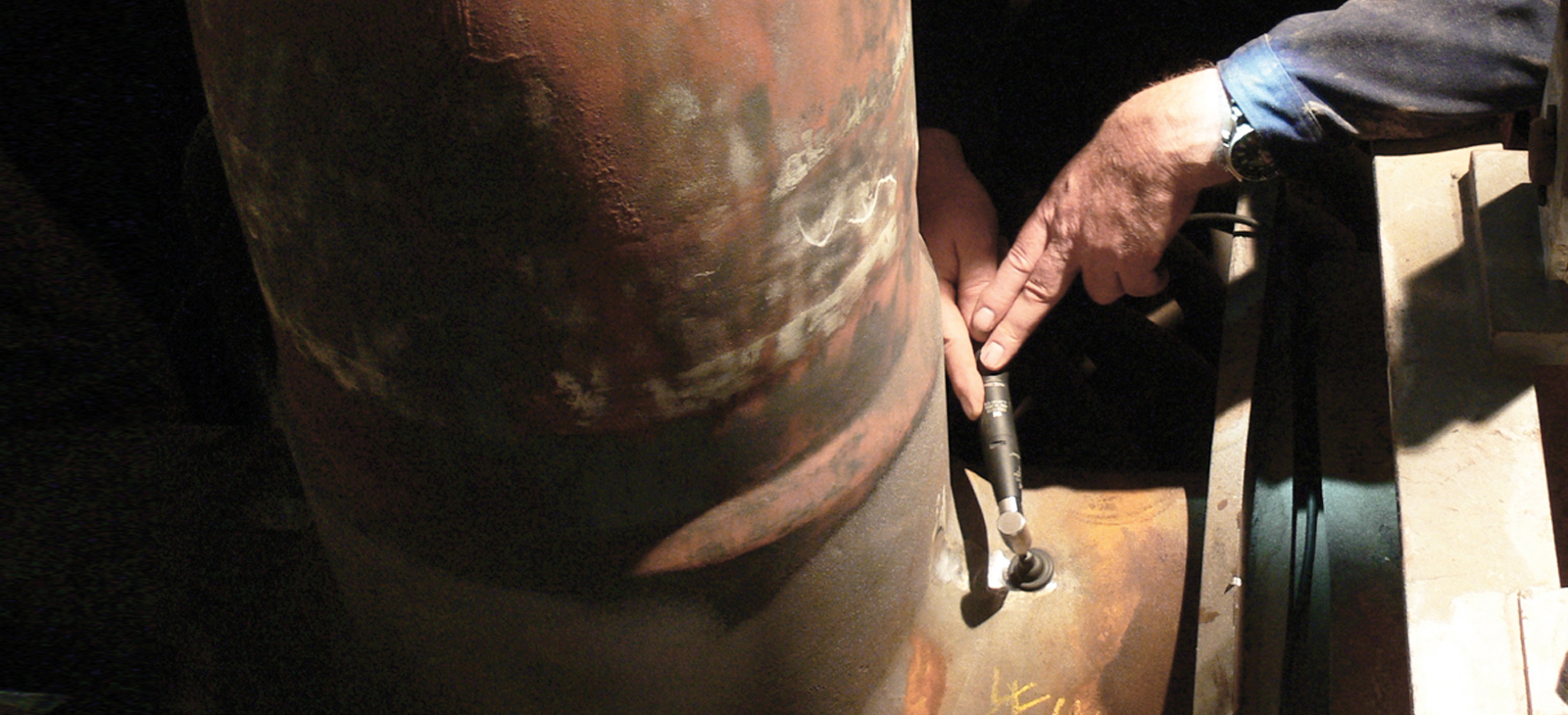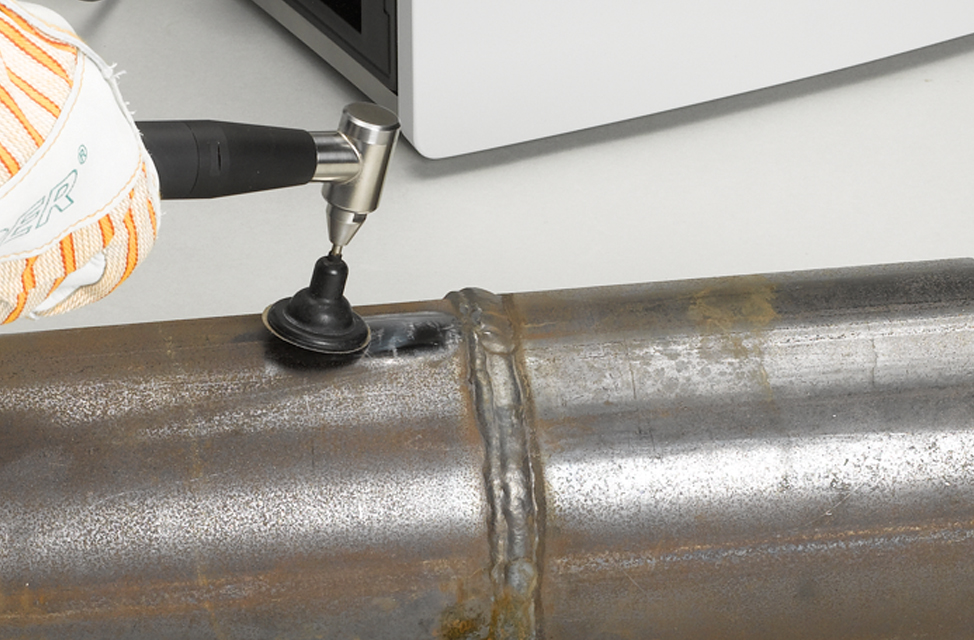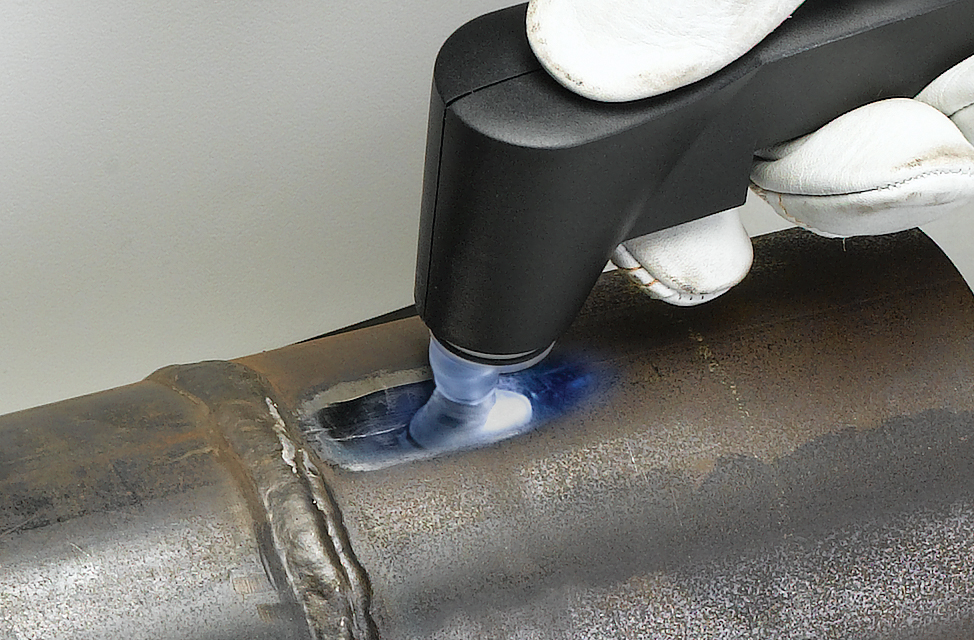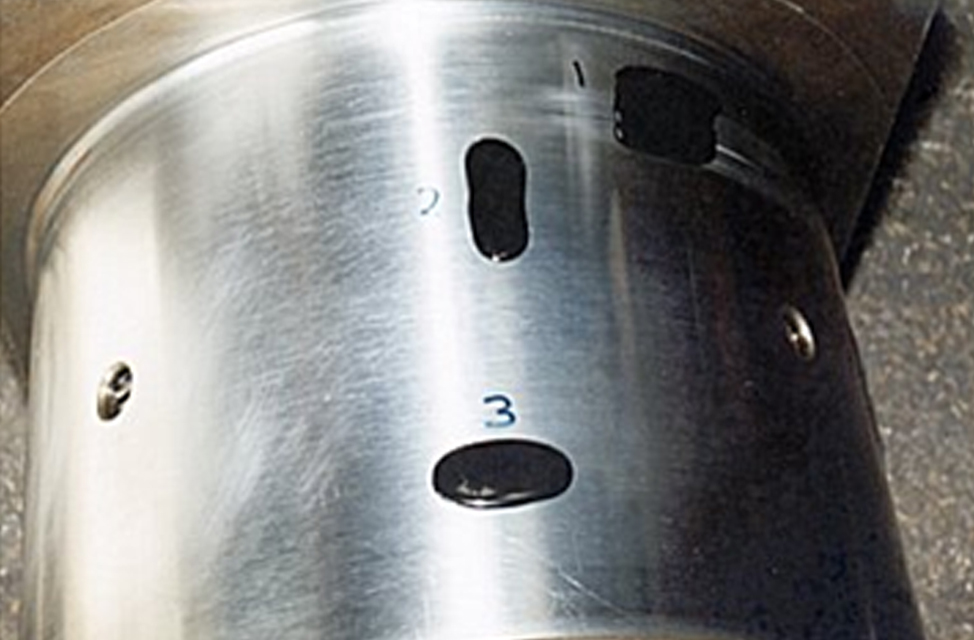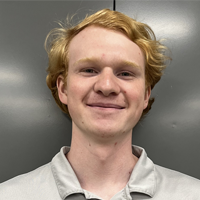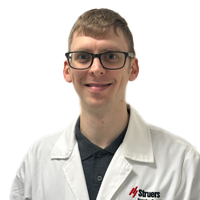About On-site Materialography
Conventional materialographic preparation entails taking a representative sample from a workpiece or part by cutting or sawing. This method is not always appropriate as it destroys the component which is being examined. The non-destructive testing method enables the necessary inspection to be carried out on-site with or without minimum damage to the subject.
Struers’ lightweight portable equipment and advanced replica techniques can be used to acquire a high quality image or take a replica of the prepared surface that enables a complete evaluation of the surface without damaging the whole part.
On-site materialographic preparation and examination is particularly important for quality control, inspection, and failure analysis in power stations, aircraft, chemical plants, offshore platforms, etc.

